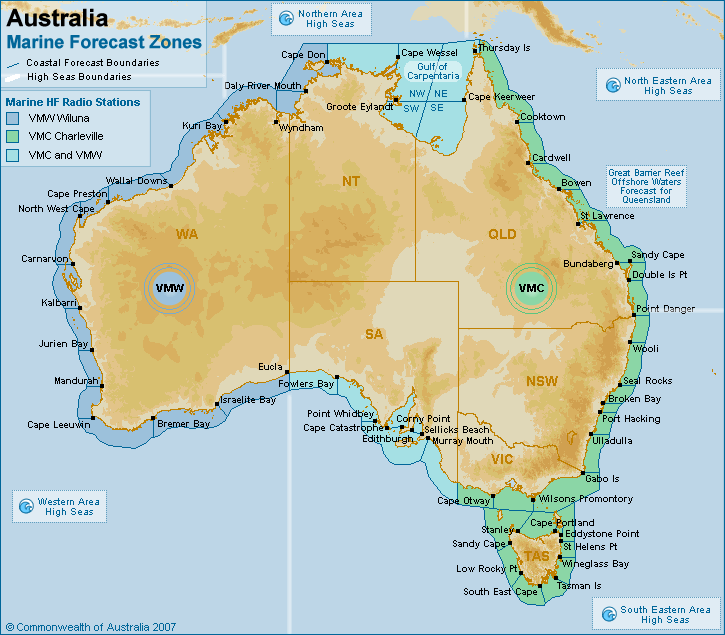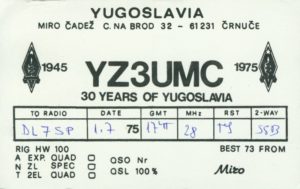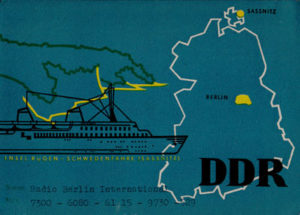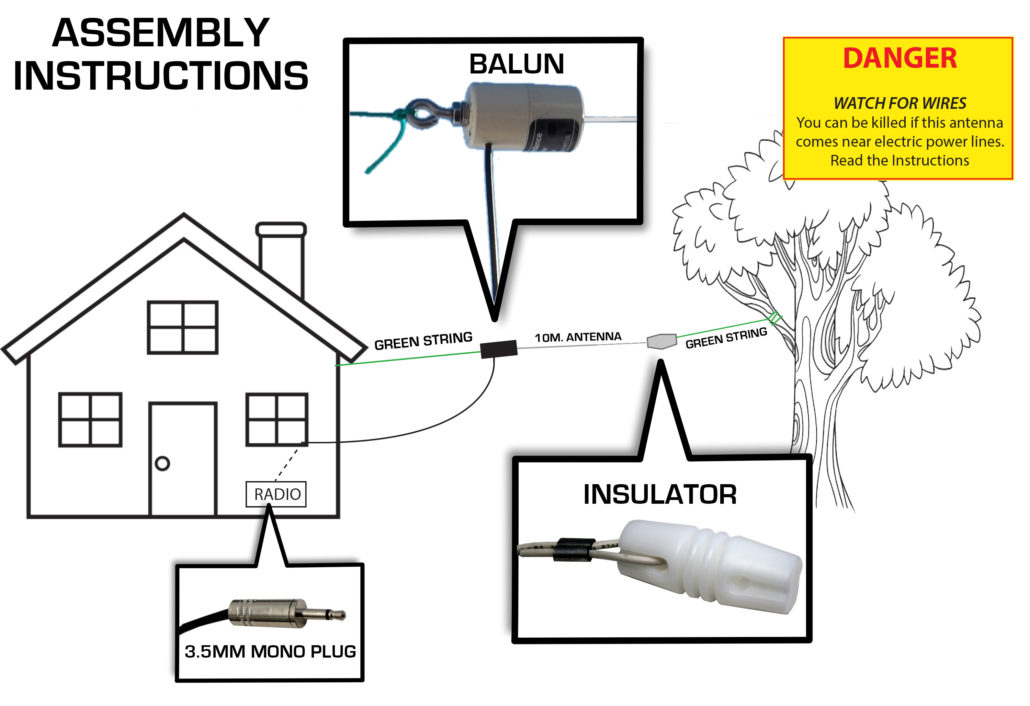Listeners Guide
About Shortwave Radio
Shortwave listening (commonly abbreviated to SWL) is the fascinating hobby of listening in to broadcasters around the world.
This can be done at minimal cost from anywhere in the world without having to rely on anyone else. All that is required is a suitable Shortwave (SW) radio receiver and an antenna. Often the antenna is part of the receiver. Shortwave listeners range from casual listeners seeking overseas news and entertainment to technical enthusiasts developing new antennas and reception methods. There are hundreds of millions of shortwave listeners around the world.
The Shortwave radio (also referred to as HF radio) bands are alive with a plethora of domestic and international broadcasts from around the world. These bands are used by a wide range of operators including amateur radio operators, 4WD clubs, marine pleasure craft, commercial aircraft, the Royal Flying Doctor Service, airports, and coastal patrols to provide real time up to date information services.
To ensure maximum coverage of their signals, shortwave broadcasters operate at very high power and utilise directional antennas to cover areas with significant population.
How Does It Work?
Other than via the use of satellites, the medium that allows radio stations from around the world is called the ionosphere. The ionosphere is the region above the Earth’s atmosphere located between 100 to 1000 Km above the surface of the Earth, and contains atomic particles that become ionised when exposed to X-ray and UV radiation from the Sun. It has the capability of influencing radio propagation around the world, by allowing signals to bounce off it and back to earth. The ionosphere is separated into several layers, depending on the altitude above earth.
The most significant for shortwave listeners is the F2 layer, which occurs between 100 and 500Km above Earth and is the densest part of the ionosphere. It is the layer responsible for most radio wave reflection. Reception via the ionosphere is called “skywave”, in contrast to “groundwave” propagation which follows the surface of the earth.
Long range reception varies between day and night due to the amount of ionisation caused by the Sun. Skywave transmissions can be heard thousands of kilometres away from the broadcasting location.
Shortwave Bands
The radio frequency (RF) spectrum between 1800Khz and 30000Khz (1.8-30Mhz) is known as shortwave. This spectrum is broken down into the following shortwave bands:
| 49m band: 5900-6200kHz | 41m band: 7200-7450kHz | 31m band: 9300-9900kHz | 25m band: 11600-12100kHz | 22m band: 13570-13870kHz |
| 19m band: 15100-15800kHz | 16m band: 17480-17900kHz | 15m band: 18900-19020kHz | 13m band: 21450-21850kHz | 11m band: 25600-26100kHz |
Most shortwave receivers cover some or all of these bands. Between these bands are frequency allocations for “utility” stations.
Utility Stations Apart from shortwave broadcasters, other organisations use the HF spectrum. Generally these will be radio networks established for communications purposes rather than providing entertainment signals. Organisations such as 4WD clubs, the Royal Flying Doctor Service, international aircraft, amateur radio operators, outback communications, ships at sea, Navy operations, and the Bureau of Meteorology
MW Stations
Long distance reception of domestic AM broadcast stations also falls under the umbrella of shortwave listening. During the night, when the radio wave absorbing E layer is thinnest, MW and lower frequency SW signals propagate long distances. This is why it is possible to pick up strong interstate AM stations at night.
LW Stations
Many airports have a continuous non directional beacon (NDB) for pilot navigation. Normally identified by several letters in Morse Code referring to the airport location, these beacons often broadcast weather information for pilots. This is the most up to date weather information for the local area that is available. There are over one hundred NDB stations in Australia.
FM Stations
Most cities and country towns have access to several FM stations. Often these can be Community Radio stations, ABC FM, or commercial stations. These stations have been allocated power levels to ensure they only broadcast in the area designated by their transmitter license. So it can be very interesting to see if any far away stations can be received.
One of the great advantages of shortwave listening is that it allows you to listen to world events from a different perspective other than the local media. The Russian or Chinese interpretation of world events can be surprisingly different to that of the US and other Western countries. News items are normally broadcast in real time to give listeners the most up to date information.
Not all shortwave stations use English as their primary language, but almost all do have some English programming. If you are trying to learn a foreign language, shortwave broadcasts can be an ideal source of foreign language material. For immigrants, shortwave may be the only way to keep in touch with events from their mother country.
Travellers can stay in touch and obtain accurate road condition, bush fire, and flooding reports, by listening to the VKS 737 4WD radio network. News and entertainment services are regularly received in our region by shortwave radio broadcasters including the BBC, Radio New Zealand International (RNZI), and Voice of America (VOA), particularly useful when you are out of range of regular AM and FM stations.
Additionally, many of the shortwave radio broadcasts can be used to obtain useful information for example Aerodrome longwave (LW) Non Directional Beacons are a good source of local weather conditions and the Bureau of Meteorology’s marine weather broadcasts provide accurate and timely coastal and offshore weather information for mariners.
Sample Shortwave Listening with your computer
Newcomers to shortwave listening might like to sample the hobby by connecting to our on-line shortwave receiver. You can do this with your computer and most popular web browsers. Simply visit: www.tecsunradios.com.au and click on “on-line shortwave receiver” button.
DAB+ (Digital Audio Broadcasting)
DAB+ radio uses an advanced digital and robust transmission system to overcome the problems of interference on MW (AM) signals and multipath distortion on FM. This improves performance over conventional broadcasting systems by offering improved building penetration and reception on the move, such as when using Public Transport.
There are 540 AM transmitters in Australia radiating from 50W to 50kW and almost 2,500 FM transmitters radiating from 1W to 250kW.
Each transmitter carries just a single program with some transmitting Radio Data Service (RDS) for the display of a line of text.
In Australia DAB+ transmissions are made in band III VHF spectrum on Ch 9 and Ch 10. As each transmitter can carry up to 26 programs, DAB+ has the potential to offer a huge range of programming, and many traditional MW broadcasters already simulcast in this mode to achieve a larger audience, including those who are unable to receive satisfactory MW signals.
In addition, DAB+ radios include a visual display which can show news and weather information as well as current programming information.
DAB+ digital radio transmission provides superior audio quality when compared to traditional AM/FM radio signals and due to the compression system used, offers the listener a greater number of radio stations from which to choose.
DRM: Broadcasting System of the Future.
Digital Radio Mondiale (DRM) is a revolutionary broadcasting system, suitable for medium and short wave bands. Since the earliest days of broadcasting these bands have been filled with signals that are amplitude modulated. These transmissions have limited audio quality and particularly in recent years interference from consumer electronics products has created havoc with AM reception. Broadcasts in the FM band have received far more listeners with the result that audience figures are dropping for AM broadcasting.
Now DAB+ Digital Radio is available in many countries and this has set a new standard in broadcasting. The next stage is to improve the transmissions on the medium and short wave bands. As a result a totally new system has been developed. Known as DRM, the system offers near-FM sound quality plus the ease-of-use that comes from digital transmissions. The improvement over AM is immediately noticeable. DRM can be used for a range of audio content, and has the capacity to integrate text and data. This additional content can be displayed on DRM receivers to enhance the listening experience.
For listeners in remote locations the capability of DRM receivers to display information such as news, weather alerts, bushfire, flood and tsunami warnings is invaluable. This is a method of conveying information to listeners immediately as it becomes available.
For international broadcasters, DRM allows access to a huge audience across the world at the same cost as a regular analogue (AM) shortwave system. DRM on Medium Wave is perfect for broadcasters aiming for a national audience, especially in countries covering a sizeable geographical area.
In our part of the world Radio New Zealand International (RNZI) broadcast DRM signals into the Pacific. These signals can be heard in Australia, New Zealand, Vanuatu, PNG, Solomon Islands, Tonga, Fiji and most of other Pacific Islands.
What you can listen to now:
| Radio New Zealand: | 5950, 7440, 9700, 9765, 11725, 15720, 13730, 15720, 17675 kHz |
| BBC: | 3915, 5875, 5890, 6195, 9410, 9740, 12095, 13725, 5970, 15335, 15755, 11955, 17685, 15310 kHz |
| Voice of America: | 7200, 7405, 9620, 11695, 11705, 11805,12005 kHz |
| Papua New Guinea: | 9675, 4890, 5960, 7325, 3365, 3905, 3325, 3275, 3205, 3335, 3345, 3365, 3245, 3305 kHz (mainly at night) |
| Solomon Islands Broadcasting Corporation: | 9545, 5020 kHz |
| Radio Japan: | 5955, 6140, 9605, 9625, 9760, 11860,11935,15325,17810,13640, 21560 kHz |
| Radio Vanuatu: | 3945 kHz |
When to Listen:
All shortwave schedules are based on Universal Time Co-ordinated. Until the 1970s this was known as GMT (Greenwich Mean Time), because the 0 degree line of longitude passes through Greenwich in London. There will be a variation from UTC for your local area. On the east coast of Australia the offset is +10 hours (+11 during Daylight Savings). UTC can easily be checked by listening to one of the many time signal stations broadcasting around the world. Such stations are WWV Colorado and WWVH in Hawaii and broadcast continuously on 2.5Mhz, 5.00Mhz, 10.00 Mhz, 15Mhz and 20.00Mhz. To differentiate between the 2 signals, WWVH uses a female and WWV uses a male voice announcement.
Marine Weather Services
The Bureau of Meteorology provides 2 weather services for Australia, VMC for the East coast and VMW for the West coast. These services are designed for mariners and operators of leisure craft. However the weather forecasts are also relevant for land based coastal residents and travellers.
VMC operates on 4426, 8176, 12365 and 16546 kHz during the day (7am to 6 pm) and 2201, 6507, 8176 and 12365 kHz at night (6 pm to 7 am). VMW operates on 4149, 8113, 12362, and 16528 kHz during the day from 7 am to 6 pm, and at night on 2056, 6230, 8113 and 12362 kHz.
Both services broadcast bulletins or warnings on the hour. Weather forecasts for Coastal Waters and High Seas followed by Coastal Observations are broadcast using a program that is repeated every four hours. Special Announcements are made five minutes before every hour.
Aviation
For those of us interested in aviation, there are a number of HF USB stations that can easily be heard:
Royal Flying Doctor Service
The Royal Flying Doctor Service (RFDS) is the largest and most comprehensive aeromedical organisation in the world and uses the latest in aviation, medical and communications technology to deliver extensive primary health care and 24-hour emergency service to those who live, work and travel throughout regional Australia.
The RFDS operate from a number of locations across outback Australia and can be heard on the following frequencies:
| Derby | 6945, 5300, 2792 kHz |
| Port Hedland | 6960, 4030, 2280, 5300 kHz |
| Carnarvon | 6890, 4045, 2280, 5360 kHz |
| Meekatharra | 6880, 4010, 2280, 5360 kHz |
| Kalgoorlie | 6825, 5360, 2656 kHz |
VHF
Common Australia Wide VHF Airband frequencies:
| 119.100 | Aero Club Operations, Flying Schools |
| 119.200 | Parachute operations |
| 120.850 | Sports aviation air to ground |
| 121.500 | Distress world wide |
| 122.500, 122.700, 122.900 | Glider operations |
| 123.100 and 123.200 | Search and rescue Australia wide |
| 123.450 | Air-to-air chat below 20,000 feet |
| 127.900 | Air Show Frequency |
| 129.600 | Crop Dusting |
HF VOLMET
VOLMET aviation broadcasts contain critical meteorological information for aircraft in flight( “en vol”, as the French would say), broadcasts include; TAF (Terminal Aerodrome Forecast), SIGMET (Significant Meteorological Information), and METAR (Meteorological Terminal Aviation Routine) information.
HF VOLMET broadcasts generally cover a large geographical area and are intercepted by flight crews whilst en-route to an area and out of local VHF ATIS (Automatic Terminal Information Service) broadcast range. The information received is used to determine possible flight route deviations by evaluating predicted weather conditions along their flightpath, which are out of aircraft weather radar range.
VOLMET terminal information for Brisbane, Calcutta, Bangkok, Karachi, Singapore, and Bombay is broadcast sequentially on 6676 kHz beginning on the hour and 30 minutes past the hour.
VOLMET terminal information, Tokyo, Hong Kong, Auckland, and Honolulu is broadcast sequentially on 8828 kHz beginning 10 minutes past the hour. All broadcasts are made using USB (upper sideband).
VOLMET broadcasts originate from the location on which they are reporting and can provide shortwave enthusiasts with a good indication of propagation conditions.
4WD Club VKS737
The Australian outback is a popular destination for travellers who want to see the real Australia and get off the beaten track. However, the isolation of remote areas is a constant concern for travellers and regular communications can help to identify potential hazards and ensure travelling safety.
The VKS-737 4WD shortwave radio network provides a communication service for travellers including updates of the latest road condition, weather forecasts, bushfire reports, and a messaging service for travellers throughout Australia’s most remote areas.
The VKS-737 4WD shortwave radio network provides scheduled broadcasts on their primary frequency 8022 kHz and backup frequency 5455 kHz. Additionally, casual “chat channels” can be heard on 3995, 6796, 10180, 11612, 14977 kHz.
Typically, East coast broadcasts can be heard at 14.30, 17.30, 18.30, and 20:00 AEST and West coast broadcast can be heard at two hours prior to the Eastern broadcasts in winter and three hours prior in summer.
The VKS-737 4WD shortwave radio network comprises base stations located at Perth, Derby, Darwin, Alice Springs, Charters Towers, St Marys (Tasmania), Newcastle, and Swan Hill.
For more information about the VKS-737 4WD shortwave radio network:
http://www.vks737.on.net/
Australian Longwave or Non Directional Beacon (NDB) Frequencies
These broadcasts are made to provide aviators with weather conditions at their point of arrival or departure and for navigation purposes. There are over 100 NDB transmitters operating in Australia, the list below provides some examples.
Bankstown 416, Richmond 347 ,Camden 281 ,Nowra 359 ,Brisbane 302 Archerfield 419, Mt Isa 338, Ballarat 239 ,Avalon 404 , Moorabbin 398, Adelaide 362, Parafield 416, Perth 272, Darwin 344, Tindal 356, Alice Springs 335, Hobart 362, Launceston 242, King Island 332, Lord Howe Island 272, Broken Hill 332, Mildura 272, Nowra 359. (All frequencies are in kHz and use AM modulation)
Major World Air Routes
Vast areas of the world lack the necessary local VHF radio communication systems needed to provide reliable radio coverage between aircrews and air traffic controllers. The lack of VHF coverage within most of these areas is due to the very remote location of these regions, for example much of the airspace over the Atlantic and Pacific oceans lacks VHF communications as it is impossible to install transmitters on a reliable platform within these regions. As a result a network of shortwave (HF) frequencies have been allocated to provide long range voice communications between aircrews and
ATC facilities.
Aircraft arriving and departing from these locations: Auckland, Brisbane, Nadi, Pascua (Easter Island), Port Vila, Rarotonga, San Francisco, Tahiti, Wallis can be heard on 3467, 5643, 8867 13261 and 17904 kHz. Aircraft flying over the Indian Ocean may be heard on 3476, 5634, 8879, 13306 and 17961kHz.
Australian Domestic Shortwave Services
Since the demise of ABC domestic shortwave transmissions in 2017, several private operators have begun broadcasting. Ozy Radio based south of Sydney are operating on 4835Khz and Radio 4KZ is operating from Innisfail on 5055 Khz. Both stations operate at power levels of around 1000 watts.
A Practical Guide to Locating Sources of AM and HF interference
The introduction of switch mode power supplies, light dimmers, flat screen TV sets, computers and their monitors, printers, modems, USB hubs etc and energy saving light bulbs has bought with it a range of interference problems for users of AM and HF shortwave bands.
RFI or radio frequency interference as it is formally known normally manifests itself on the AM broadcast and shortwave bands as harmonics of the fundamental interfering frequency.
In the “pre-digital” days, such battery chargers where “linear” in operation, typically containing a transformer, rectifier and filter capacitors. However the price of copper (used in the transformer) and the ability of switch mode designs to accept a wide AC voltage input range (typically 90-270V AC), has led to the almost universal adoption of this technology for battery chargers. No longer are there 110V and 240V AC variants of each battery charger, one design fits all!!
A primary source of these interfering harmonics, are such switch mode power supplies. Commonly known as “AC adaptors” or “plugpacks”, these are the little power supplies used as battery charges for smartphones, radio receivers themselves, battery chargers etc. Although these devices operate at 200KHz, the internal oscillator or more accurately the “chopper” circuit can generate harmonics well into the HF bands.
Normally built into a plastic case, the device is free to radiate, save for a few internal components designed to minimise interference. Assuming you are experiencing such interference, the first step is to locate the source.
First, ensure the receiver is being operated off its internal batteries, and tune to part of the AM or HF band where you can hear the interference but no radio signal is present. Turn off all room lights and see if there is any reduction in interference. Energy saving light bulbs contain electronic circuitry in the base of the light globe, which can cause interference, just as the electronic ballast can do in a fluorescent light. Dimmers are also a source of interference as well as fan controllers. All these need to be turned off.
It is prudent to only try one thing at a time, so turn the lights back on, and then systematically unplug every smart-phone battery charger in your house. A smart-phone charger generating interference on the AM band can be heard several rooms away, either by being radiated back down the house wiring, or by being radiated in free space.
The next potential culprits to eliminate are TV sets. Unplug each one from the wall (turning the power point off is OK) and see if there is any change in interference.
If you have progressed through the above steps without results, the next step is to turn off the power to your house at the fusebox. Whilst this normally means resetting all the clocks, microwave ovens etc. if will conclusively prove if the interference is coming from your house.
What is a QSL card?
QSL is the radio telegraph code meaning “I confirm” or “I acknowledge receipt”. In shortwave listening, a QSL is a card or letter from a radio station confirming that the recipient indeed heard the station. Most broadcasters will respond to listener reception reports with QSL cards or letters. Many SWL’s (Shortwave Listener) have amassed impressive, colourful collections of these souvenirs of their listening experiences. To receive a QSL from a station, you need to send a “reception report” to the station giving information about what you heard.
- A good reception report should include the following:
1. The date and time (in UTC) you heard the station
2. The frequency on which you heard the station
3. Details about what you heard sufficient to establish that you indeed heard the station; these are things like names of announcers and programs, titles of musical selections, station slogans, etc.
4. An evaluation of the signal quality, including strength, degree of fading, and any interference you were experiencing (include the names and frequencies of interfering stations)
5. The make and model of radio you are using, along with any external antenna you use.
Some stations send out stickers, decals, and pennants made of paper, plastic, or cloth to regular reporters. A reception report to a station will typically get you on their mailing list for program schedules for years to come. Always send your reports via air mail; the extra cost over surface mail is a small price to pay for the extra speed and reliability of air mail service. Some non-broadcast stations especially time signal stations, maritime stations, and hams will also reply to listener reports, especially if the listener prepares a QSL card and sends it along with their report.
Many of people enjoy short-wave listening without bothering to send reception reports and collecting QSLs, and indeed there are listeners (and stations) that consider the entire practice to be a waste of time and energy. Today, QSLs cards from stations in countries like the USSR, Czechoslovakia, East Germany, Yugoslavia and other countries that no longer exist, are pieces of history.
Tecsun Shortwave Outdoor Antenna
The Tecsun Shortwave Outdoor Antenna significantly enhances reception of signals in the medium wave (AM) and shortwave antenna bands coving 0.5-30 MHz. The Tecsun Shortwave Outdoor Antenna is based on the longwire antenna design but provides significantly improved reception over a longwire because the Tecsun Shortwave Outdoor Antenna utilises a matching transformer that acts as a balun with a ratio of 10:1. This provides an optimal match between the 500Ω antenna and the 50Ω input of the external antenna input of a radio greatly increasing the amount of signal provided to the tuner.
The antenna’s coax feeder acts as a counterpoise for the antenna, therefore no connection to ground is necessary. However, the stainless steel eyelet which is connected to the balun is internally grounded, if reception is noisy this can be grounded to an external earth. The coaxial cable is terminated in a mono 3.5mm plug that suits many portable shortwave receivers, including the Tecsun PL310ET, Tecsun PL 365, Tecsun PL600, Tecsun PL660 and Tecsun PL880. The antenna is omnidirectional and can be used indoors or outdoors and is completely waterproof.






